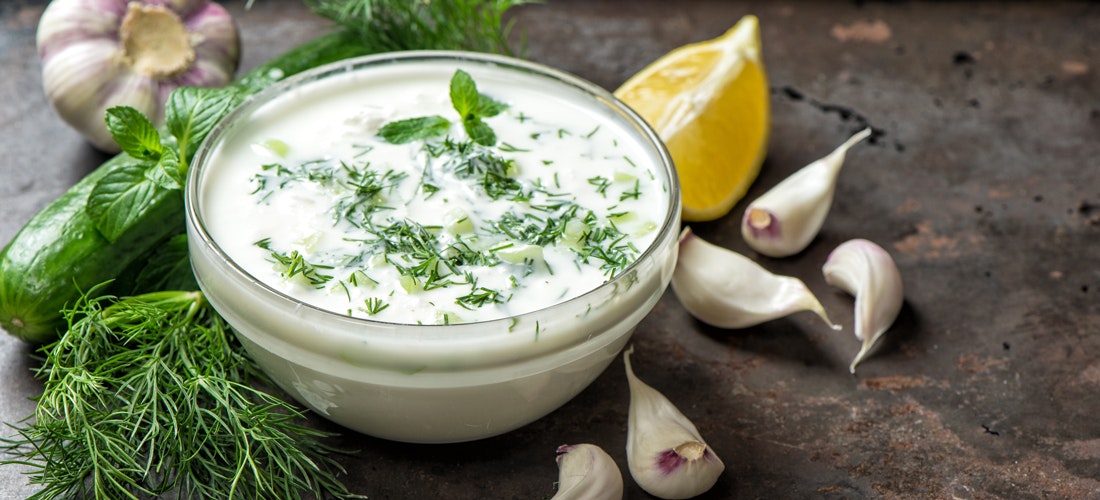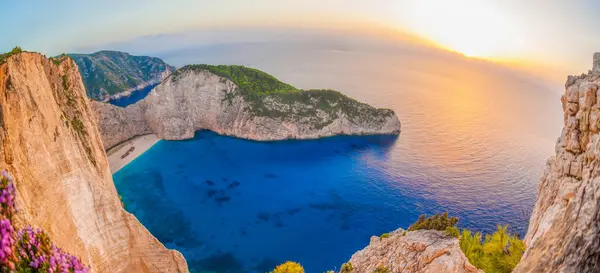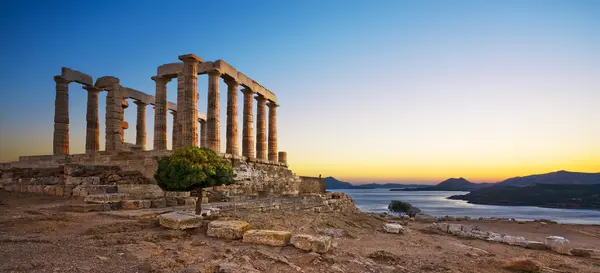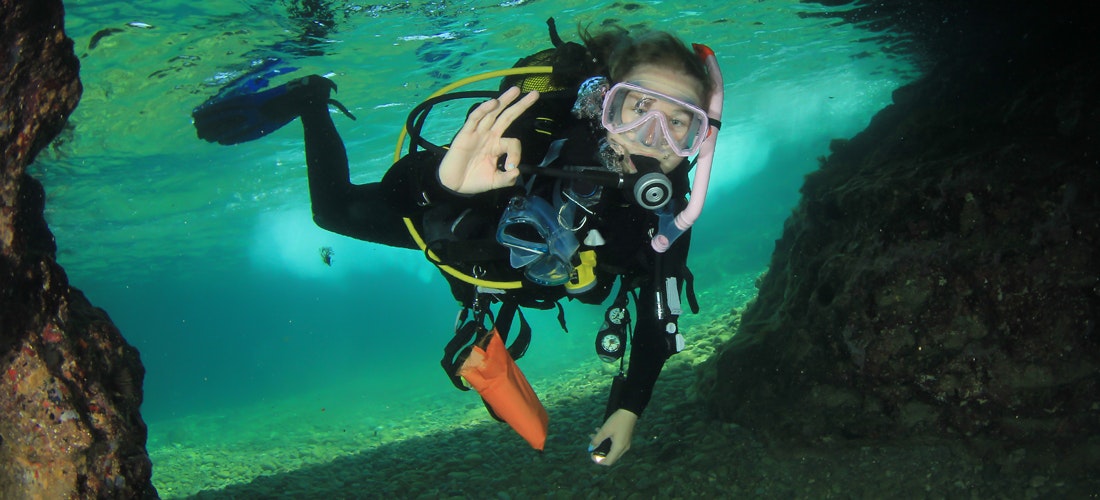The Mediterranean climate allows for numerous crops to be cultivated, making Greeks particularly partial to fresh ingredients. Their aromatic dishes use wild herbs, such as rosemary, dill, cumin, curry, basil, parsley, mint and nutmeg.
Olive oil is the most characteristic and indeed oldest ingredient, which you will find in almost every single dish. Olives themselves are also used in abundance (the most famous being black olives from the town of Kalamata), as are tomatoes, capsicum, aubergine, courgette, onion, potatoes, green beans, and okra (edible hibiscus). Commonly you’ll find a combination of meat and ingredients mostly used in other countries for sweet dishes (such as cinnamon or raisins).
Mezedes is typical when dining in Greece and comprises of a number of small appetizers served with wine. These include various cheeses, loukaniko herb salami, fried chunks of octopus and squid, vegetable salads, or pitta bread with tzatziki or other dips. Desserts are very sweet and made with a thinly layered filo pastry, nuts and honey.
The local diet differs from region to region. Game, especially boar, is popular in the mountainous and wooded northern part of the country whereas seafood is typically consumed on the coast. Typical types of fish on offer are the common sole (a type of flatfish), mackerel and silverside.
The Ionian islands, which were ruled by the Italians for a long time, differ to the rest of Greece in their liking for pasta. Crete excels with its many local specialities (paximadi wholemeal bread and dakos salad prepared as an accompaniment) as does Cypress (halloumi herb cheese or lountza, pork tenderloin marinated in wine and smoked).
There are some excellent drinks to be had in Greece. There are some fine wines and, of course, the Greek national drink ouzo, a traditional anise liquor originally created in Asia Minor from Turkish raki. Another infamous Greek spirit is Metaxa, which is a unique combination of brandy and liqueur. Greek coffee is served at the end of every meal and is made from finely ground coffee beans without filtering.


.jpg)


